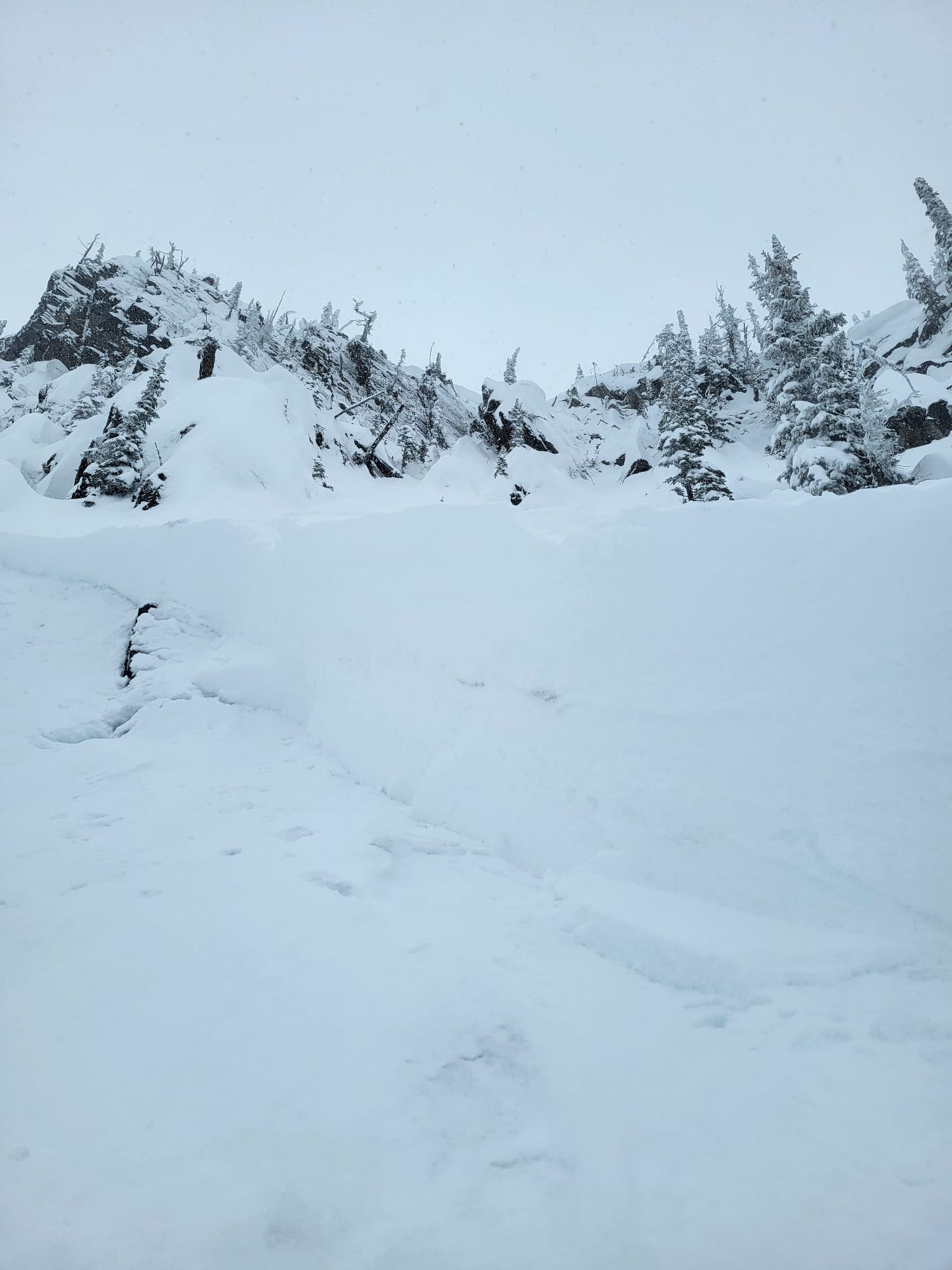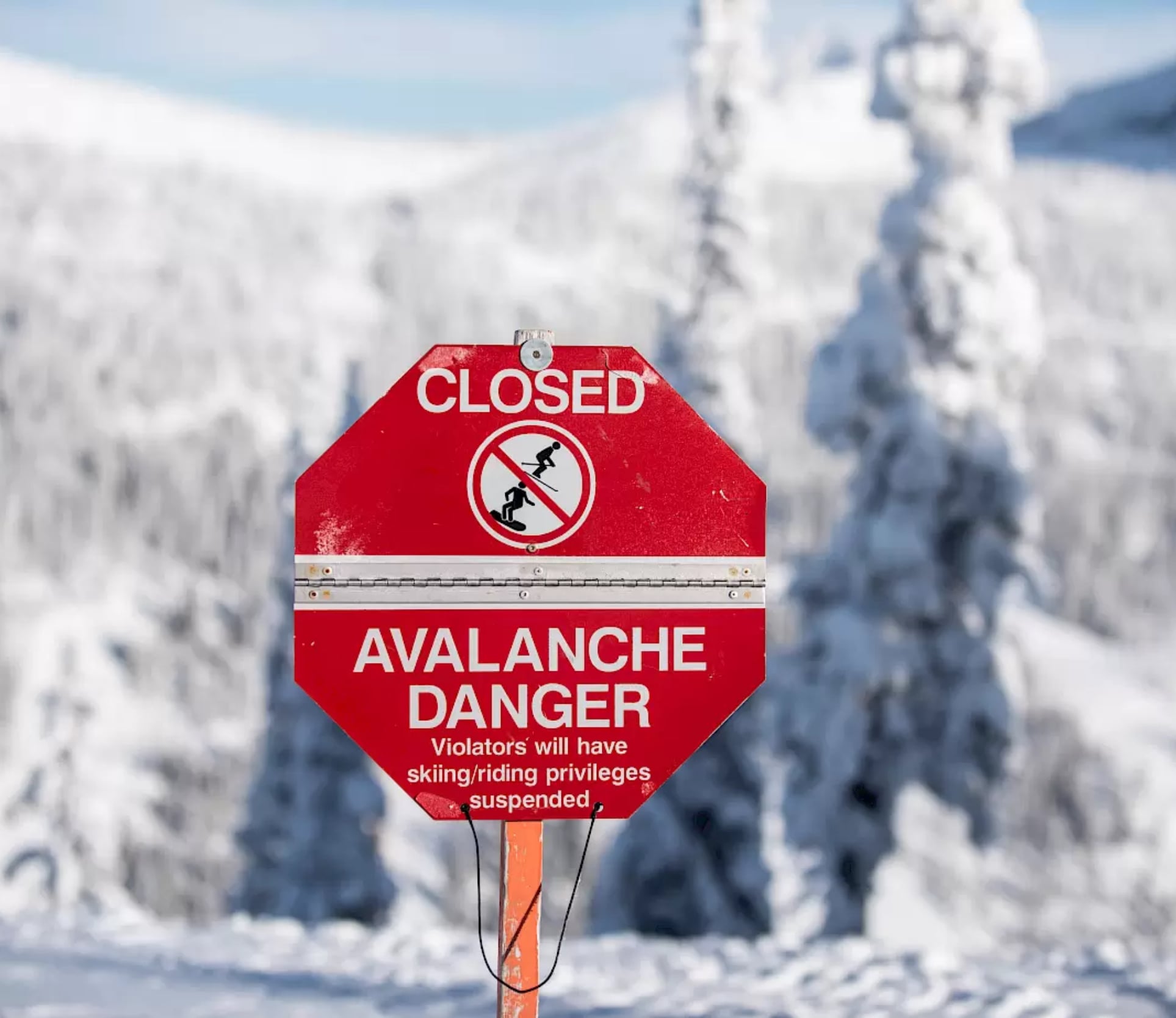
Between February 26 and March 5, Whitewater Ski Resort, British Columbia, experienced a historic avalanche control week. It’s been a different sort of winter season in the Kootenay region of British Columbia, home to Red Mountain and Whitewater Ski Resort, this year. One of the worst starts, followed by one of the biggest storms, with 64 inches falling since the taps turned on on February 24. This has led to a volatile snowpack, with Avalanche Canada putting out a Special Avalanche Warning (‘SPAW’) on February 29 which ran until March 7 for most of British Columbia. A ‘SPAW’ is put out when the avalanche conditions are especially difficult to manage.
The backcountry around Whitewater Ski Resort is riddled with steep start zones and obvious large avalanche paths. But the eight days between February 26 and March 5 were unique. The backcountry zone of Ymir Bowl overlooks the lodge and resort. Every nook and cranny is named, and lines are skied for the viewing pleasure of the people drinking on the deck of Coal Oil Johnny’s. Every so often, the patrol will heli-bomb specific avalanche paths to ensure they don’t run onto Sluice Box, the beginner run that follows Apex Creek along the bottom of the bowl back to the lodge. During these times those runs are closed.

Avalanches in Canada are rated on a scale of one to five. One being “relatively harmless to people, except they could push you into a more hazardous situation” ramping up to size five “could destroy a village or a forest of 40 hectares (~100 acres).” On average, the Ymir Bowl sees a size 3 avalanche every two years, usually one created by explosive control. This year, in that eight-day period, a staggering six size 3+ avalanches either happened naturally, or were caused by explosive control. The road into the resort was closed during some of that period, while the highways department bombed a further two slide paths that ran 3+ in size. That’s one avalanche big enough to destroy a truck or a small building a day for that period. One of these came down the slide path known as Ymir Main, a natural avalanche on March 1 that rated a size 3.5 and covered the myriad of tracks that people had put down through the usual exit from the bowl. No one was hurt, fortunately, as it came down overnight or early morning, and the debris was seen when the patrol came to work that morning.

Douglas Noblet, the Avalanche Forecasting Supervisor at Whitewater Ski Resort, gave more information on the busiest week for avalanches most active Ski Patrol members can remember. The Ski Patrol Avalanche Control Team at Whitewater flew two back-to-back Heli-bombing missions, during those eight days. The avalanche control is done only after shutting sections of the resort that could have been reached by the avalanches that are set off. The team threw 17 bags of 28lb ANFO explosives in those two missions, which combined equaled the weight of a female black bear or eight average 10-year-olds. That’s a lot of explosives.
ANFO is otherwise known as Ammonium Nitrate-Fuel Oil mixture. It is a high explosive that has been used in mining since the 1950’s, and is a staple in avalanche control across North America. The majority of the crowns that were left from these avalanches measured around five feet tall, with the largest reaching almost 10 feet.
According to Noblet, one of the bags of ANFO he threw from a helicopter when it exploded, started the biggest avalanche he had set off in the Whitewater area, another 3.5. This ran down Goat’s Slide, another well-known avalanche path right next to the resort boundary. This is a zone that the local guides and ski patrol have long said is the worst place to be ducking a rope line due it being under a start zone that can produce very large avalanches. This would seem to lend more credence to that assertion, should there need to be any.
The difference between a closure for avalanche danger and a rope line denoting the boundary of the resort is that an avalanche closure is marked by big red stop-shaped signs. These mean there is either active avalanche control or the zone has not been controlled as yet. “Going into these areas, is a recipe for losing your pass at the very least,” Noblet emphasized, “The consequences for you, the avalanche control team, and those who may have to come get you, could be far greater.”
For the patrol avalanche control program at Whitewater, February 29 to March 5, 2024, will be remembered as a rare avalanche cycle. This was a 10-20 year event, one that most working in the resort will not have seen, nor will see again in their career.
